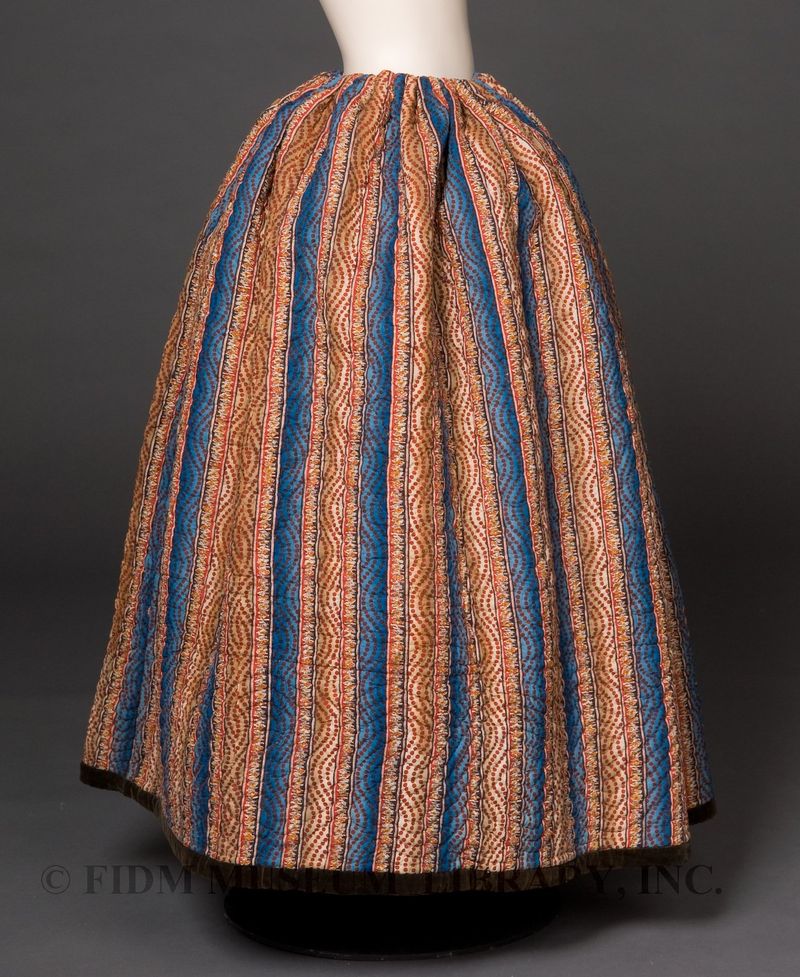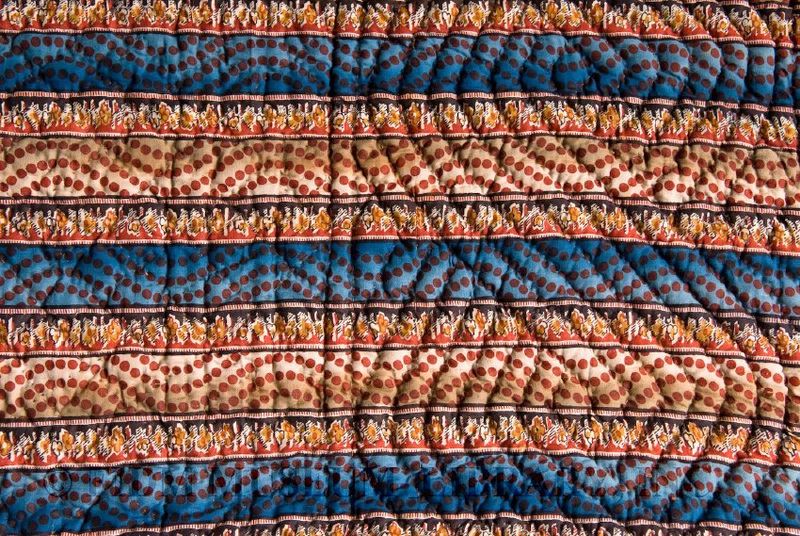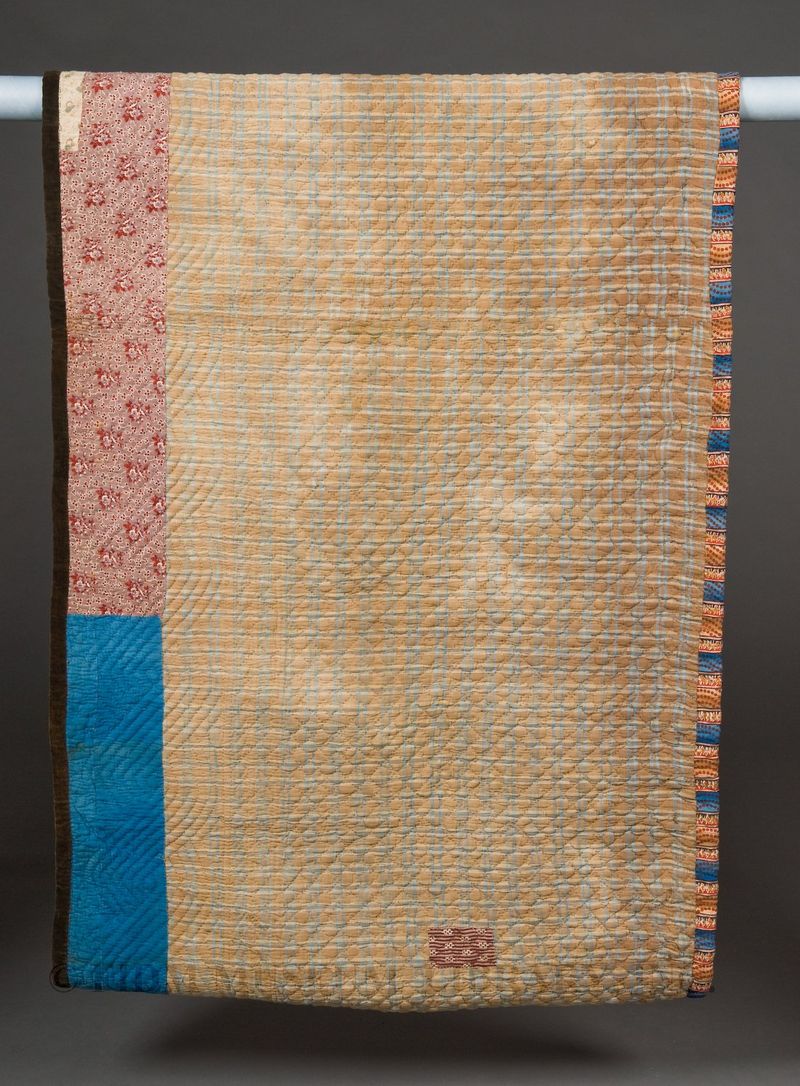Quilted petticoat
Before the introduction of the cage crinoline in 1856, women typically wore multiple layers of petticoats. The petticoat layers (sometimes as many as 6!) not only shaped the skirt into a fashionable bell-shape, but also provided warmth. Between about 1825-1850, petticoats with elaborate quilting were fashionable. Called "quilted coats," "wearing quilts" or "quilts," these petticoats were simply large quilts meant to be worn on the body. They were often created in the same manner as bed quilts, with women working together to complete the patterned stitching. After stitching up the single, vertical back-seam and gathering the drawstring waist, the quilted petticoat was ready to be worn.
 Quilted petticoat c. 1840-45 Gift of Anna Bing Arnold 2003.795.12
Quilted petticoat c. 1840-45 Gift of Anna Bing Arnold 2003.795.12
Quilted petticoats of the 19th century were a revival of the 18th century fashion for quilted petticoats. Many styles of 18th century dresses feature a split front skirt, which was worn over a petticoat of matching or contrasting fabric. Because they were meant to be seen, 18th century petticoats often feature amazingly detailed quilting, with elaborate scenes featuring animals or intricate geometric patterns.
The brightly colored and patterned cotton textile identifies this petticoat as being from the 19th, rather than the 18th, century. The dense patterning of multicolored stripes and serpentine polka dots is typical of printed cottons from the 1840s. It was produced by roller printing, a process developed in the late 18th century. In roller printing, a metal cylinder is engraved with the desired pattern and rolled over the fabric. This process allowed for very small scale, detailed and intricate textile designs. If required, additional imagery could be block-printed by hand over the roller printed pattern.
This view clearly demonstrates the quilt-like structure of this petticoat. The maker even used a variety of fabrics, as in a patchwork quilt. In a pinch, a 19th century woman could have used this as a bed covering. In the midst of this cold December, a "wearing quilt" sounds very appealing! Baumgarten, Linda. What Clothes Reveal: The Language of Clothing in Colonial and Federal America. Williamsburg, VA: The Colonial Williamsburg Foundation. 2002.

